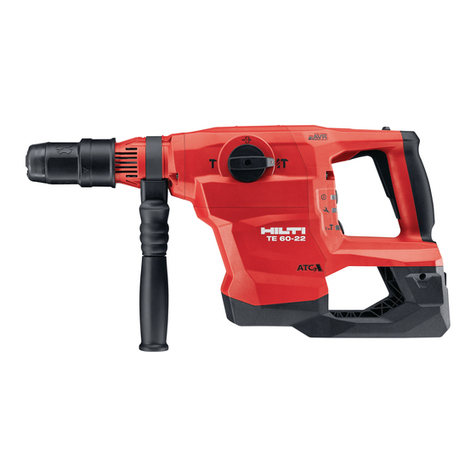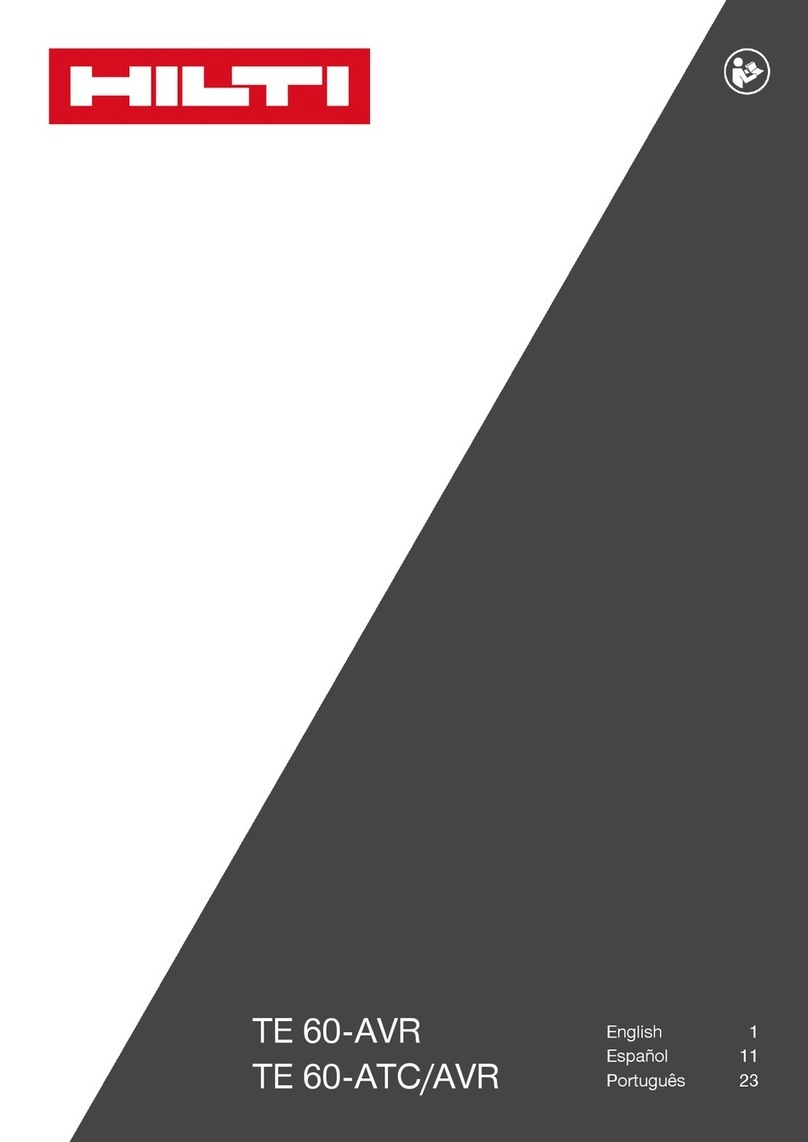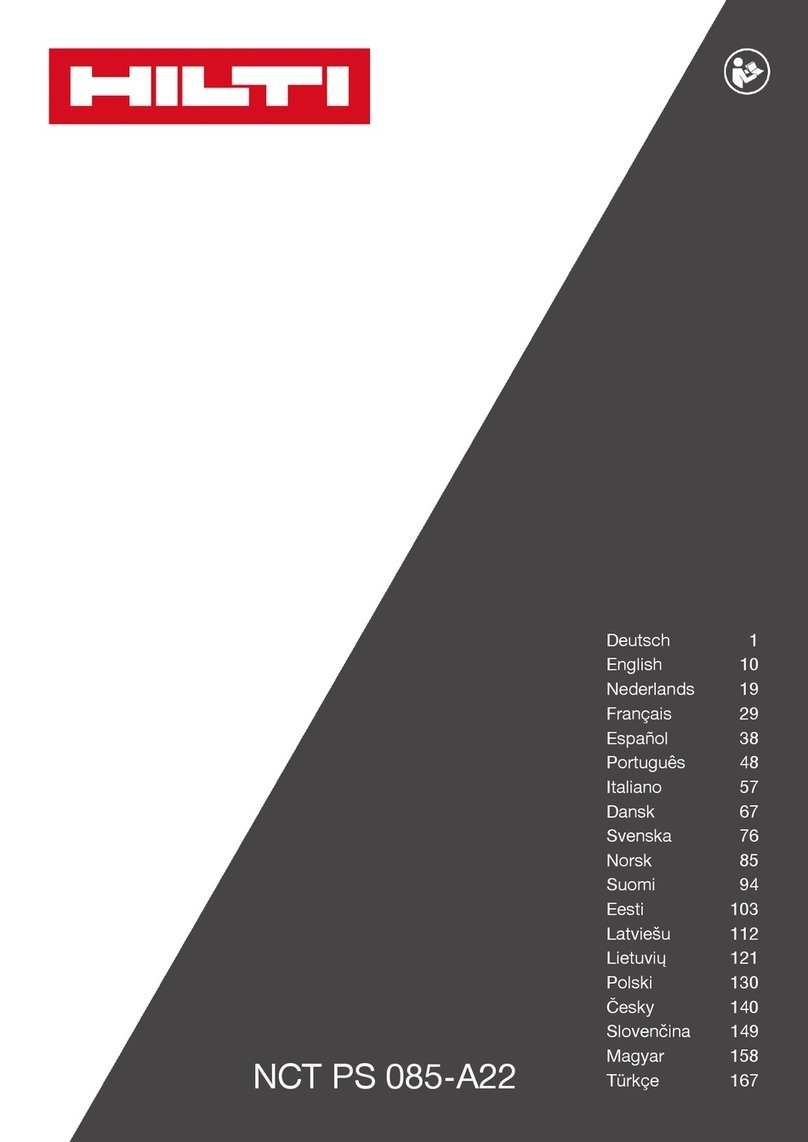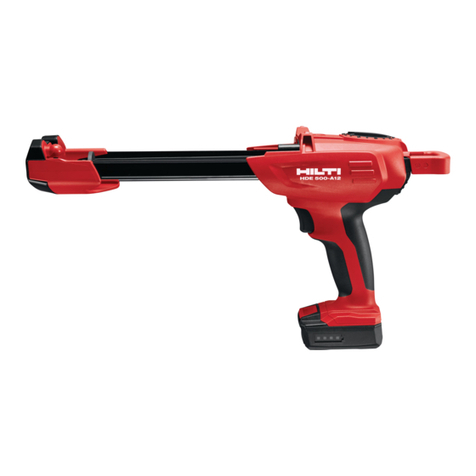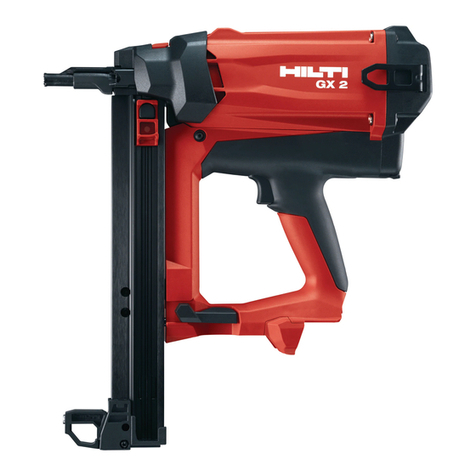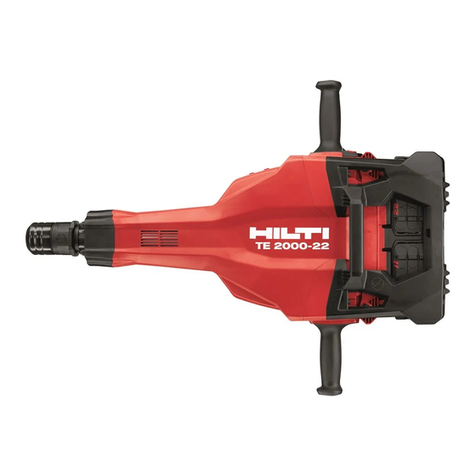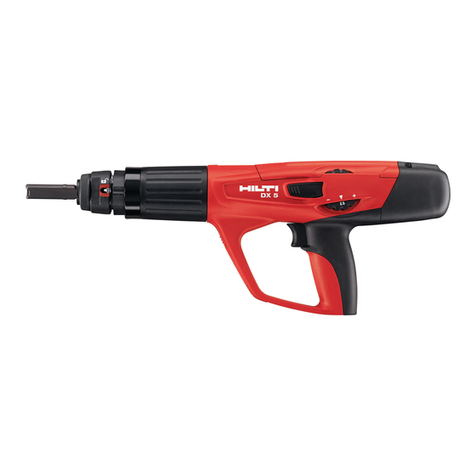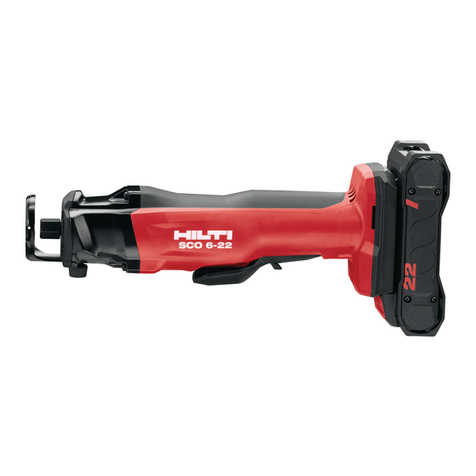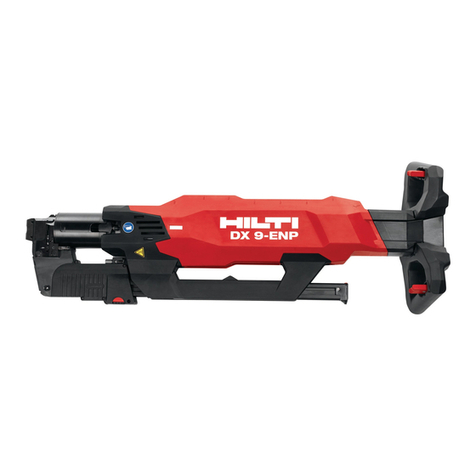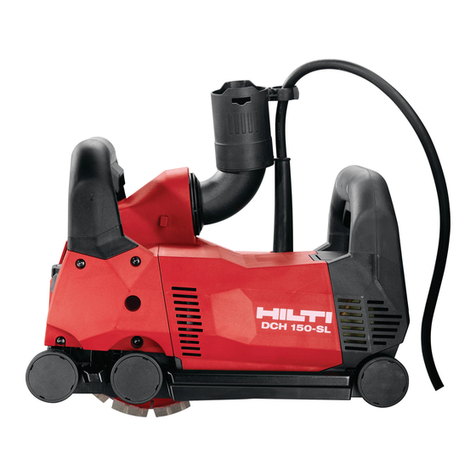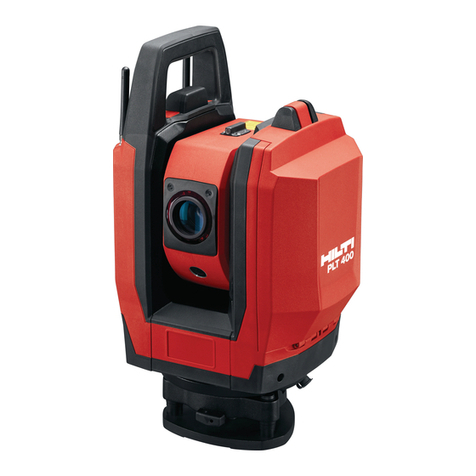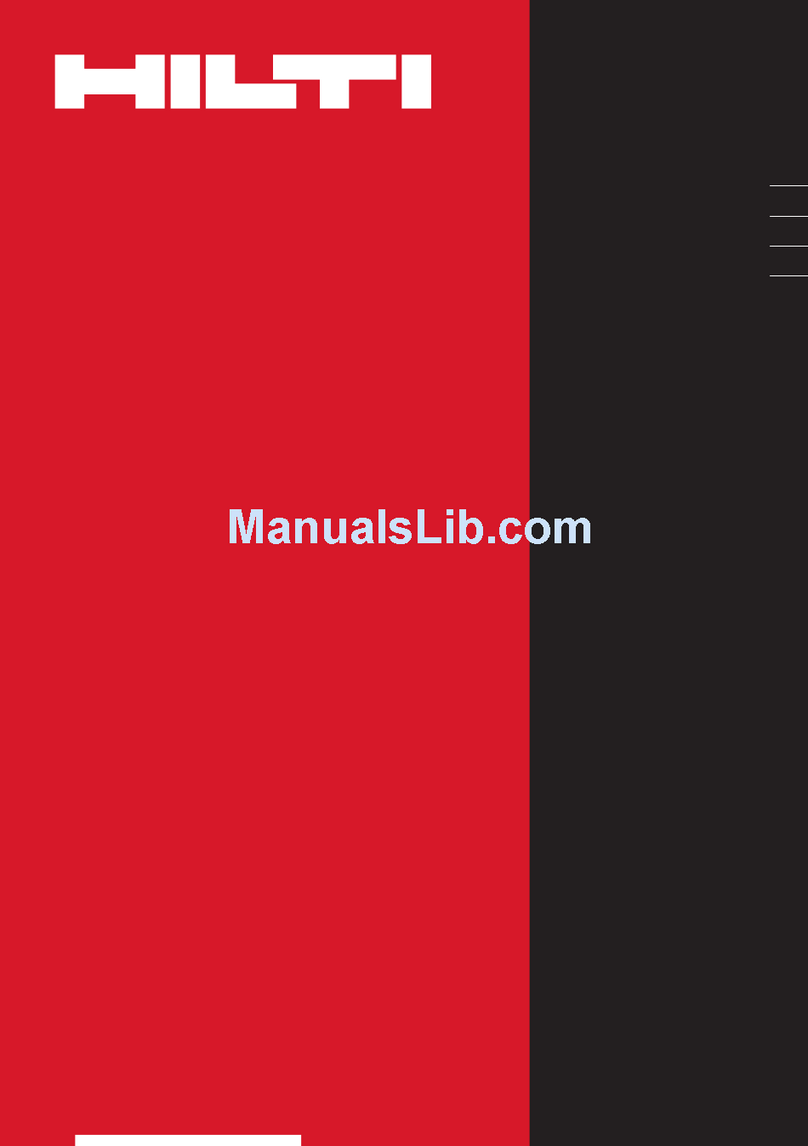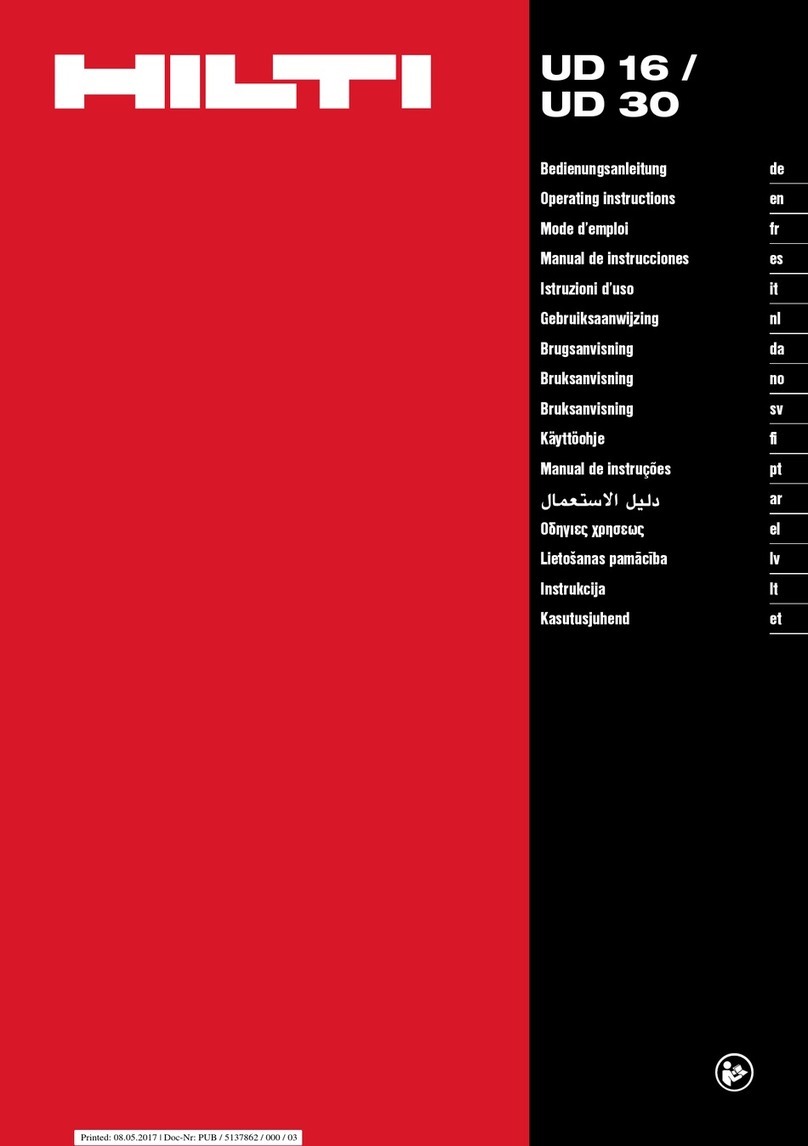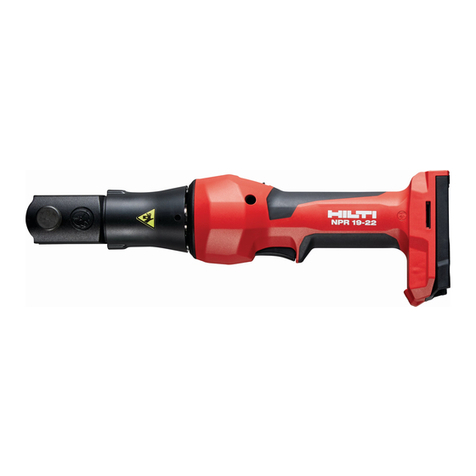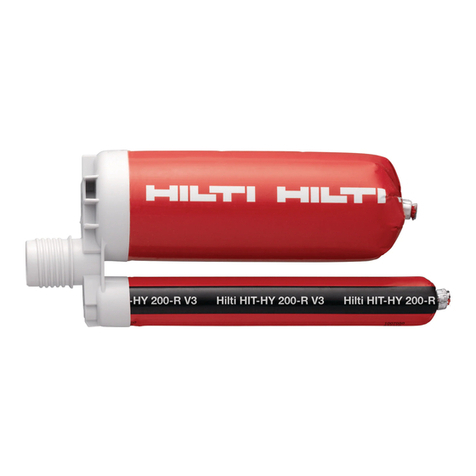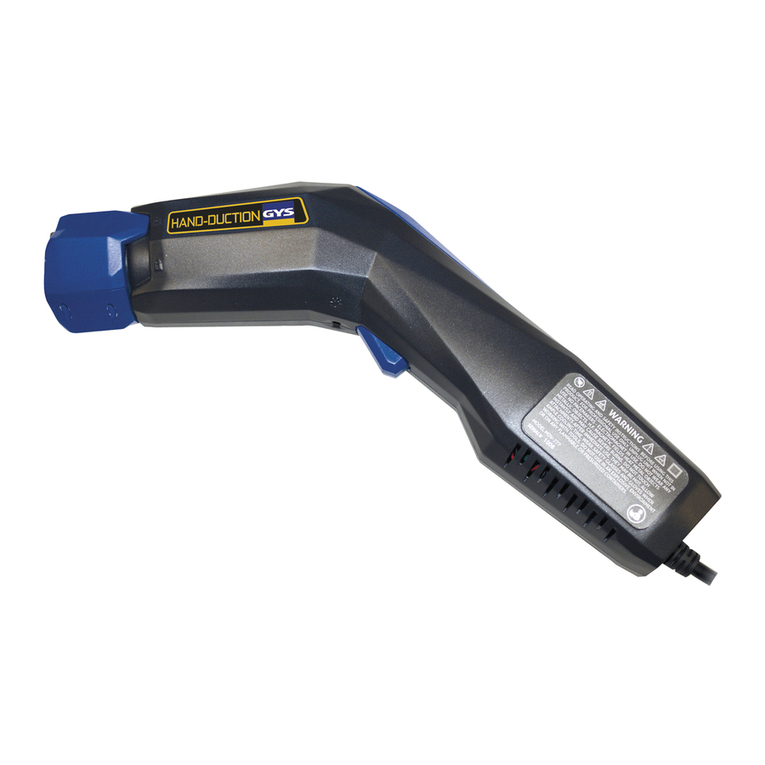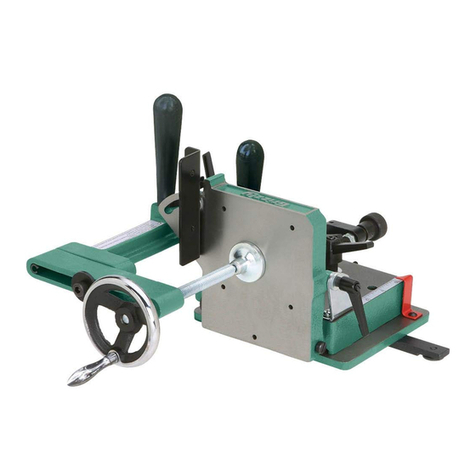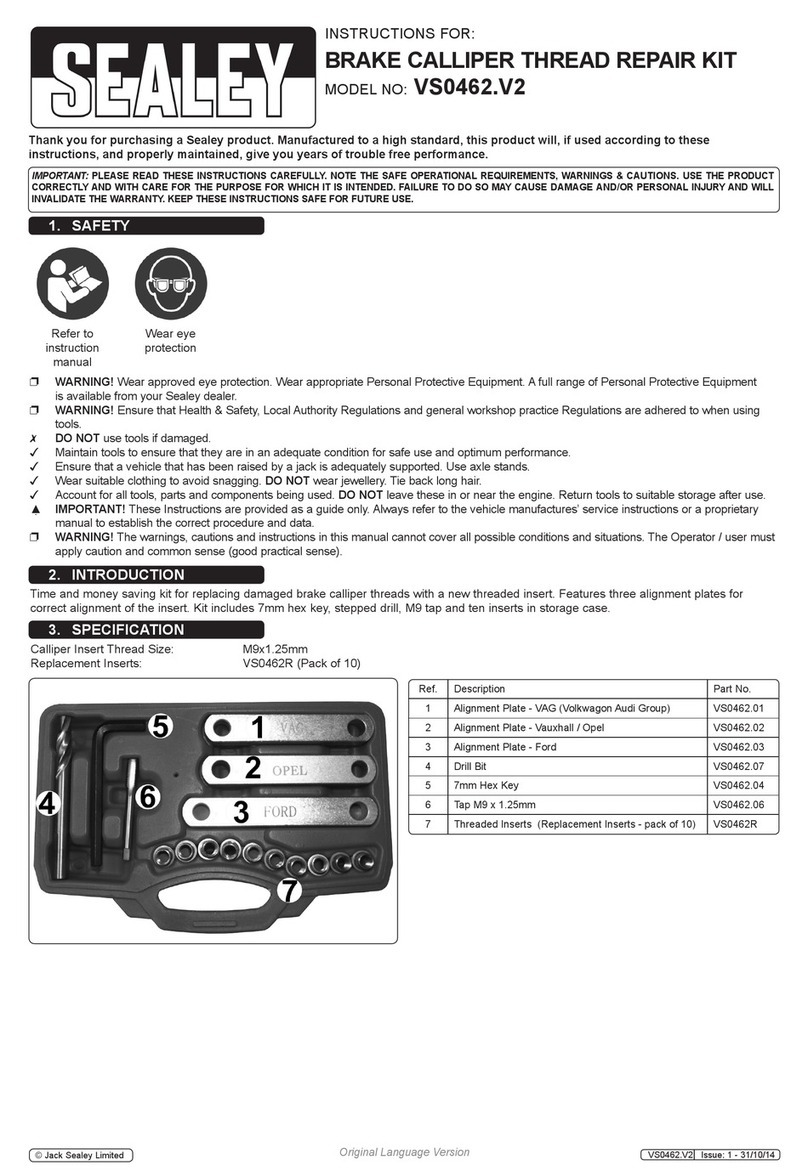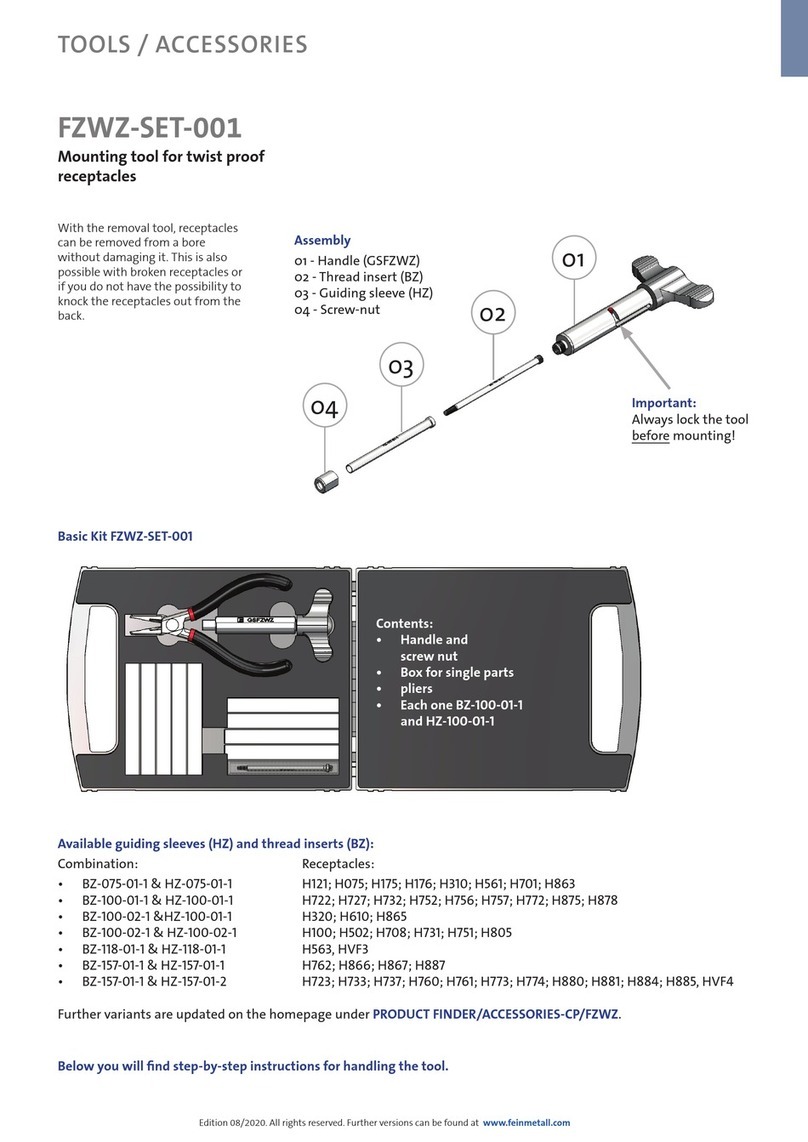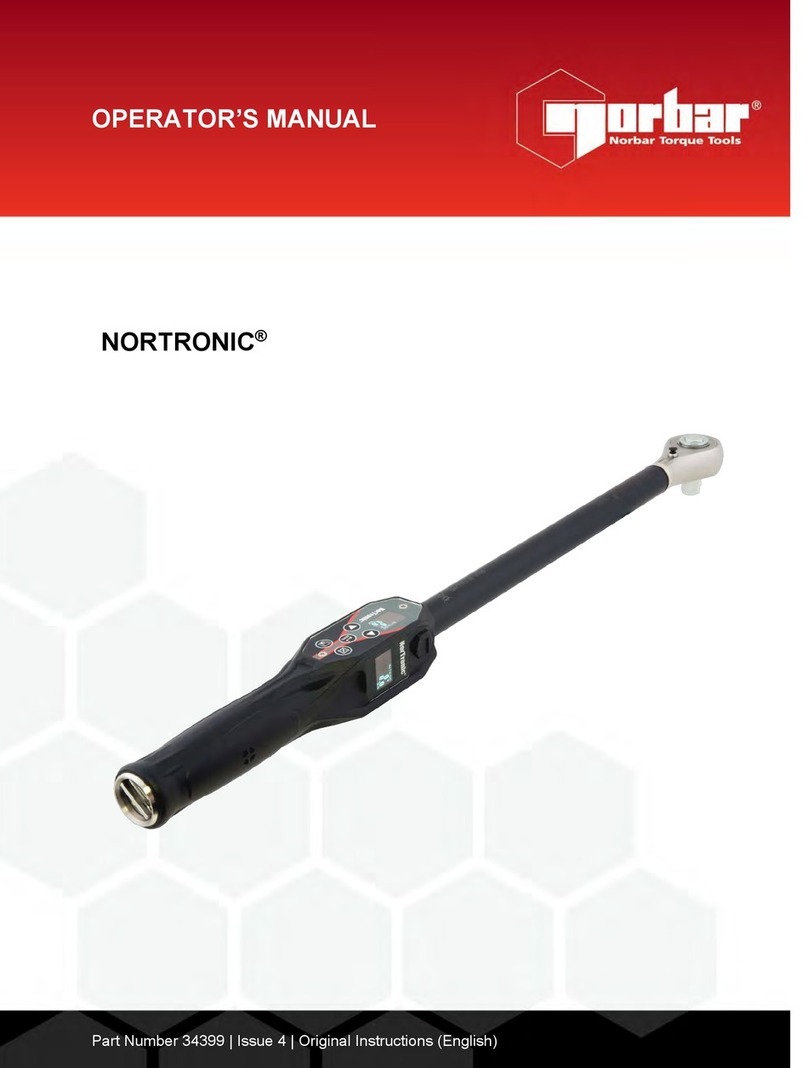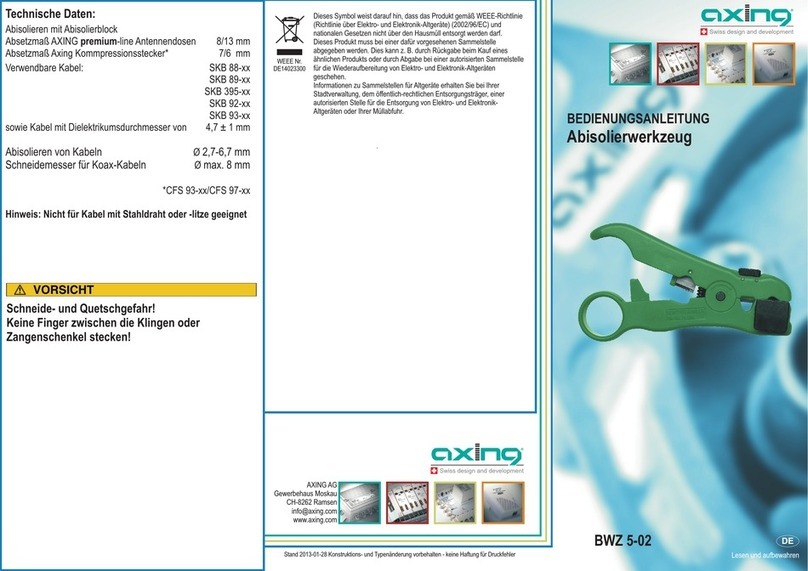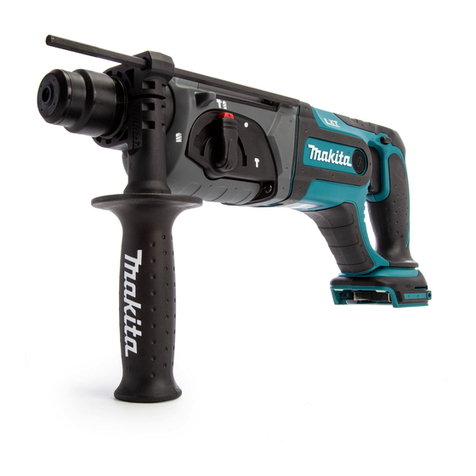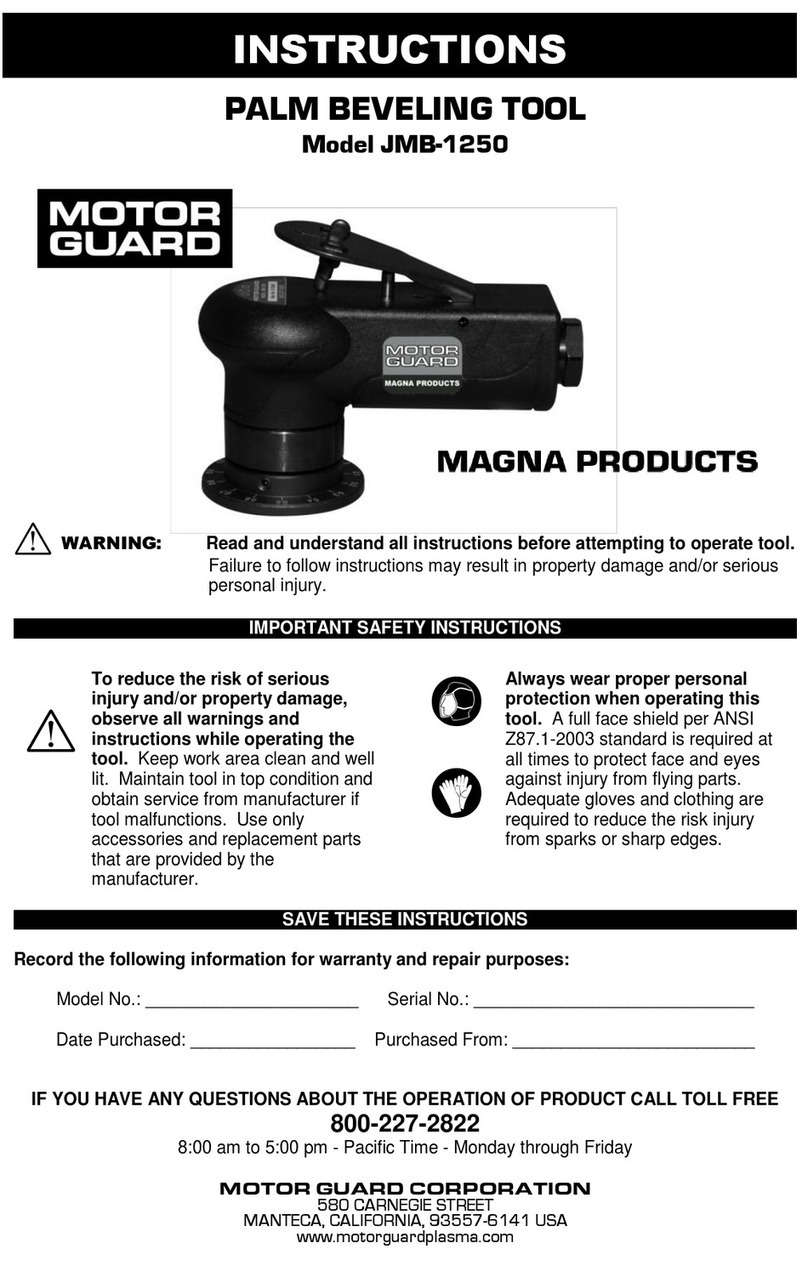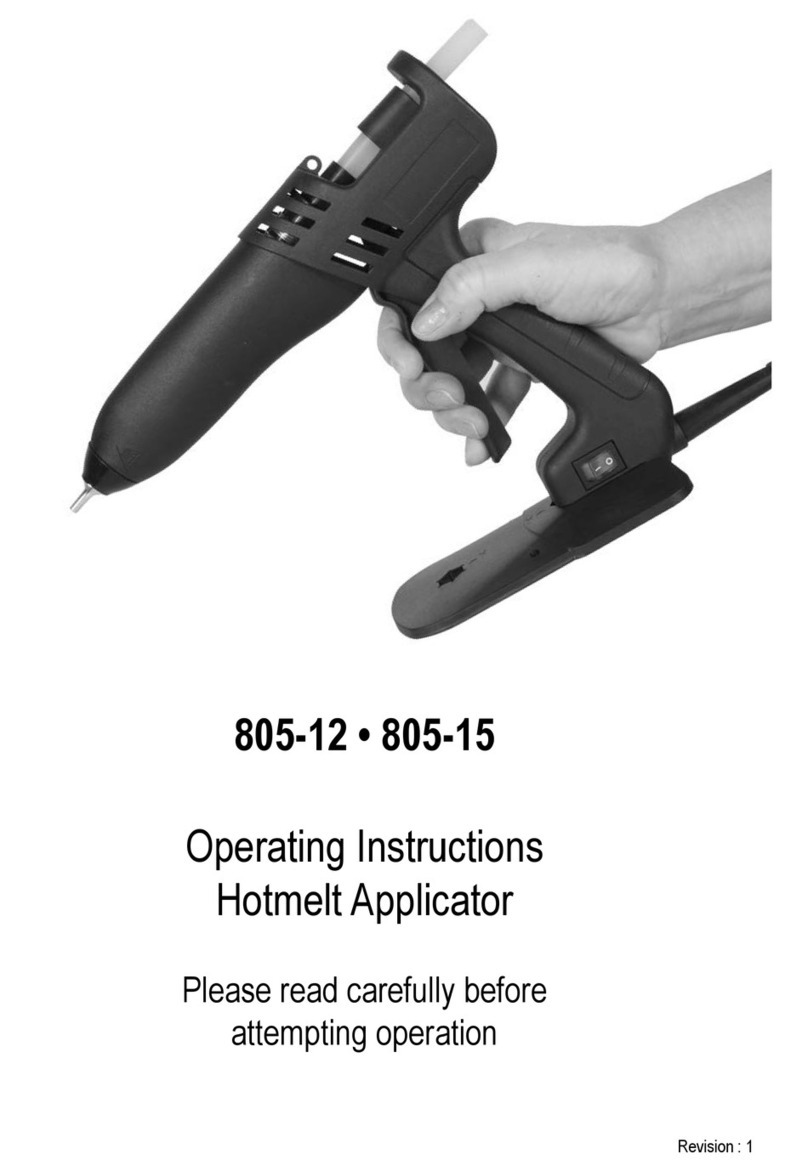
4 English 2301751 *2301751*
▶When battery pack is not in use, keep it away from other metal objects, like paper clips, coins,
keys, nails, screws or other small metal objects, that can make a connection from one terminal to
another. Shorting the battery terminals together may cause burns or a fire.
▶Under abusive conditions, liquid may be ejected from the battery; avoid contact. If contact
accidentally occurs, flush with water. If liquid contacts eyes, additionally seek medical help. Liquid
ejected from the battery may cause irritation or burns.
▶Do not use a battery pack or tool that is damaged or modified. Damaged or modified batteries may
exhibit unpredictable behaviour resulting in fire, explosion or risk of injury.
▶Do not expose a battery pack or tool to fire or excessive temperature. Exposure to fire or temperature
above 130° C (265 °F) may cause explosion.
▶Follow all charging instructions and do not charge the battery pack or tool outside the temperature
range specified in the instructions. Charging improperly or at temperatures outside the specified range
may damage the battery and increase the risk of fire.
Service
▶Have your power tool serviced by a qualified repair person using only identical replacement parts.
This will ensure that the safety of the power tool is maintained.
▶Never service damaged battery packs. Service of battery packs should only be performed by the
manufacturer or authorized service providers.
2.2 Hammer safety warnings
Safety instructions for all operations
▶Wear ear protectors. Exposure to noise can cause hearing loss.
▶Use auxiliary handle(s), if supplied with the tool. Loss of control can cause personal injury.
▶Hold the power tool by insulated gripping surfaces, when performing an operation where the
cutting accessory may contact hidden wiring. Cutting accessory contacting a "live" wire may make
exposed metal parts of the power tool "live" and could give the operator an electric shock.
2.3 Additional safety instructions for breakers
Personal safety
▶Use the product and accessories only when they are in perfect working order.
▶Never tamper with or modify the product or accessories in any way.
▶Whenever possible, use the transport trolley or other means of transport. The product should always be
carried by two persons if no transport trolley or means of transport is available for use. Bear in mind that
product plus transport trolley are of considerable weight.
▶When chiseling into ceilings, walls and floors, always make sure that you have a safe and firm stance. A
sudden break-through can affect your balance!
▶Apply appropriate safety measures at the opposite side of the workpiece in work that involves breaking
through. Parts breaking away could fall out and / or fall down causing injury to other persons.
▶You and any other persons in the vicinity must wear eye protection, a hard hat, ear protection, protective
gloves and light respiratory protection while the product is in use.
▶Dust produced by grinding, sanding, cutting and drilling can contain dangerous chemicals. Some
examples are: lead or lead-based paints; brick, concrete and other masonry products, natural stone
and other products containing silicates; certain types of wood, such as oak, beech and chemically
treated wood; asbestos or materials that contain asbestos. Determine the exposure of the operator and
bystanders by means of the hazard classification of the materials to be worked. Implement the necessary
measures to restrict exposure to a safe level, for example by the use of a dust collection system or by
the wearing of suitable respiratory protection. The general measures for reducing exposure include:
▶working in an area that is well ventilated,
▶avoidance of prolonged contact with dust,
▶directing dust away from the face and body,
▶wearing protective clothing and washing exposed areas of the skin with water and soap.
▶Wear protective gloves when changing the accessory tool. Touching the accessory tool can result in
cuts and burns.
▶Risk of injury by falling tools and/or accessories. Before starting work, check that the battery and installed
accessories are secure.
▶Keep the air vents clear at all times. Risk of burn injuries due to blocked air vents!
▶Wear eye protection. Flying fragments present a risk of injury to the body and eyes.
